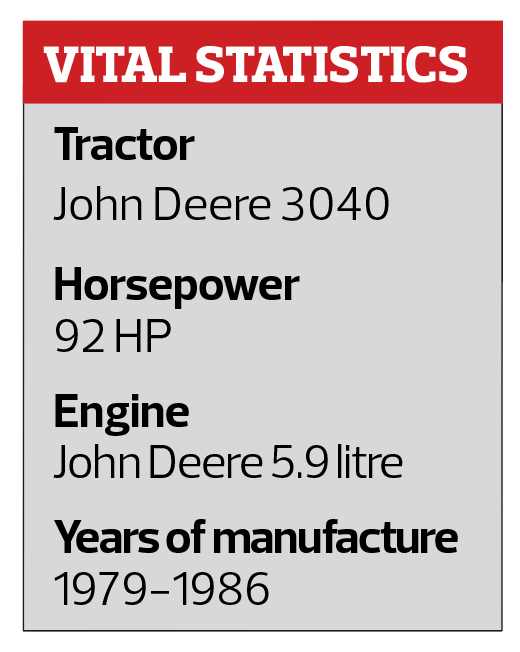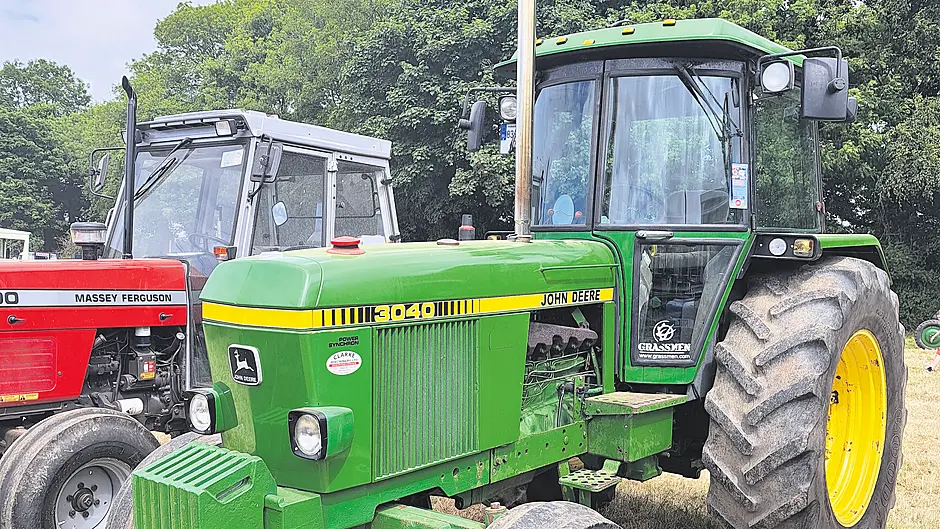
LAUNCHED in 1979, the John Deere 40 series tractors aimed to bring a new modern look to the tractor brand as well as improving driver comfort and tractor performance. As the outgoing 30 series tractors evolved into the 40 series, production of the larger tractors continued in Waterloo, Iowa, while the ‘smaller’ models were manufactured in Mannheim, Germany.
Launched in 1979, the German-built tractors were initially only supplied with the Sekura-built OPU cab. The range would have to wait two years for the now famous SG2 – SoundGuard2 – cab, which was finally fitted in 1981, with the Sekura cab becoming an option, primarily for the smallest tractors in the line–up.
The 3040, along with the 3140 and 3640 are the only three Mannheim-built six cylinder tractors in the 40 series range. The main difference between the first two is the 3040 is naturally aspirated, while the 3140 is turbocharged.
The 3040 is powered by a six cylinder 5.9l John Deere engine producing 92hp. A variable closed centre hydraulic pump provides 47l/min of oil flow and the rear linkage is capable of lifting four tons. Two transmission options were available – the standard synchronised 8F/4R or the PowerSychron which provided an on-the-move splitter effectively doubling the gear ratio to 16F/8R.

A major development for the 40 series was the introduction of mechanical four-wheel drive. The pitfalls of John Deere’s previous venture into hydraulic four-wheel drive assistance were realised and the system was replaced by a ZF front axle activated by a rocker switch on the dashboard. Hydrostatic steering was also introduced decreasing turning cycle time, while also reducing noise and vibration.
Another innovative feature of the ZF front axle was the ability of the wheels to caster at 12 degrees away from the engine on full lock. This allowed for great manoeuvrability with a total turning lock of 50 degrees.
The famed SG2 cab is a key feature of the 3040. Love it or loathe it, the single door, curved cab provides great levels of forward visibility, thanks to the offset doorframe, exhaust and air intake lining up providing only one obstruction to vision.
The cab is snug with the red foot throttle located under the brake pedals but all controls fall easily to hand, with great levels of steering wheel adjustment. Interestingly, the orange-handled handbrake is located on the right side of the dash, pulled towards the operator to engage. The right-hand side console houses gear levers and the hydraulic and draft controls, all within easy reach of the operator.
• Contact Peter at psob1987gmail.com or see Instagram @flashphotoscork










